Qbit-wallet is a cross-platform GUI wallet written using JavaScript and the Electron framework together with React. The UI was inspired by Electrum's QT client. It's simple, easy to use, and utilizes the latest in backend technologies.


Downloading
The installers can be found here. Download the appropriate file for your computer. The files are located under there OS latest release, Just click and download to your desktop or terminal.
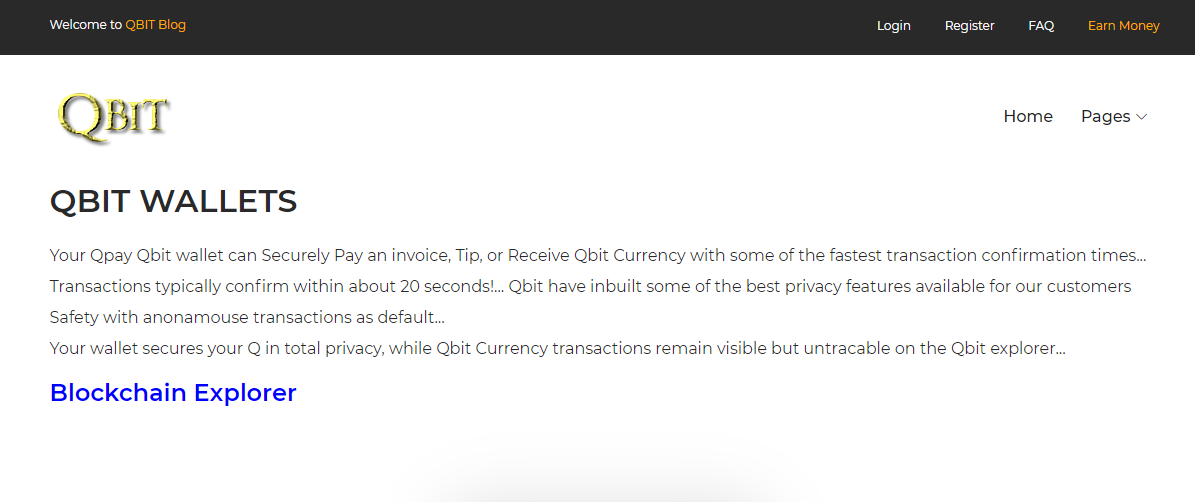
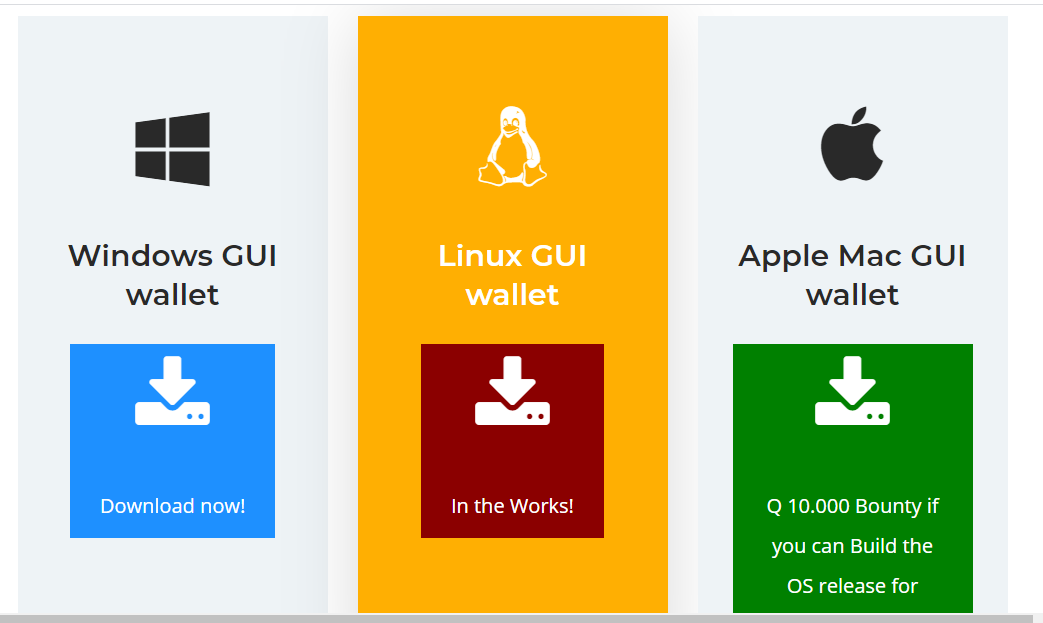
The files are listed here with the operating systems they go to:
- *Windows- -
.exefile - *Mac- -
.dmgfile - *Linux- -
.AppImagefile
Installing
Installing on Windows
After downloading the windows.exe file, navigate to the folder you downloaded it to and double-click it. You'll be greeted with a blue screen from Windows saying it protected your PC by blocking an unrecognized app or telling you this file may harm your computer just ignore this the file is perfectly safe:

Click more info if showing and then click run anyway. After this, you'll be able to install the program normally.
Why do we have to do this? Is the file safe?
Be assured this wallet is perfectly safe to use. The code is all published open source under the MIT license and wont harm your computer.
Once you've made it past this nag screen and onto the installer screen, select your choices the installer asks for and install the program. Once it has completed installing, you can launch it by double-clicking the icon on your desktop or navigating to Qbit-wallet in the start menu and clicking it. The first step of the installer screen is pictured below:

Installing on Mac
Double click the .dmg file, and the installer prompt will appear. Simply drag the Qbit-wallet icon on the left into the "Applications" directory on the right in order to install it.
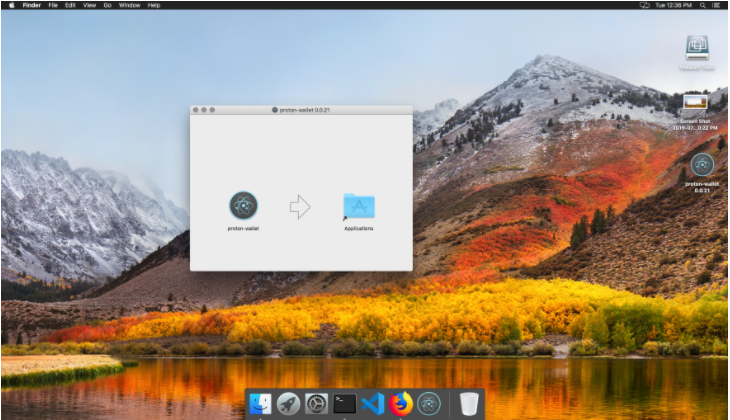
Important: Try to run the program at this point. (You can do so by clicking on the icon in the dock.) You will get an error message from MacOS but dont worry we'll sort this in the next step.
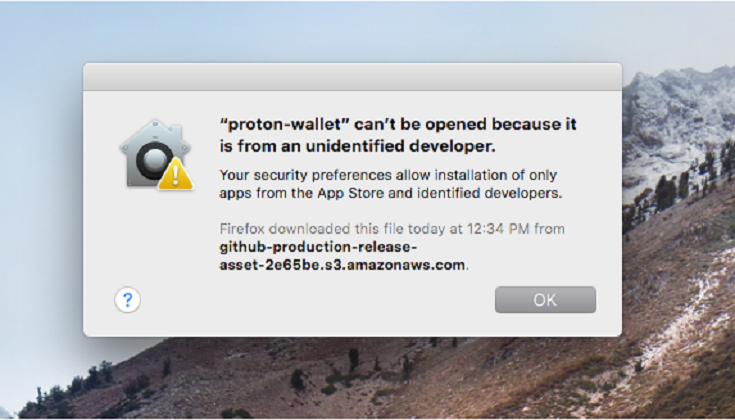
In order to run the program, navigate to System Preferences, and click Security & Privacy. You'll see a message near the bottom that Qbit was blocked because it is not from an identified developer, with a button next to it that says Open Anyway. Click that button.
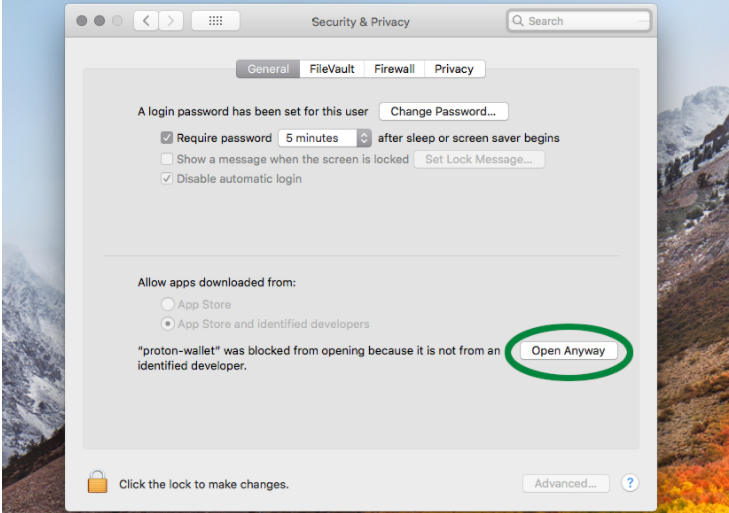
After this, you can run the program as normal by double clicking on the icon on the dock. (Unfortunately, you will have to do this every time the application updates as well)
Why do we have to do this? Is the file safe?
Be assured this wallet is perfectly safe to use. The code is all published open source under the MIT license and visible for anyone to examine.
Installing on Linux
After downloading the AppImage file, you'll need to mark it as an executable so that your system can run it. You can do it in either of these two methods:
Using the GUI
- Right click the file
- Click on
Properties. - Click on
Permissions. - Tick the box next to
Allow executing file as program.
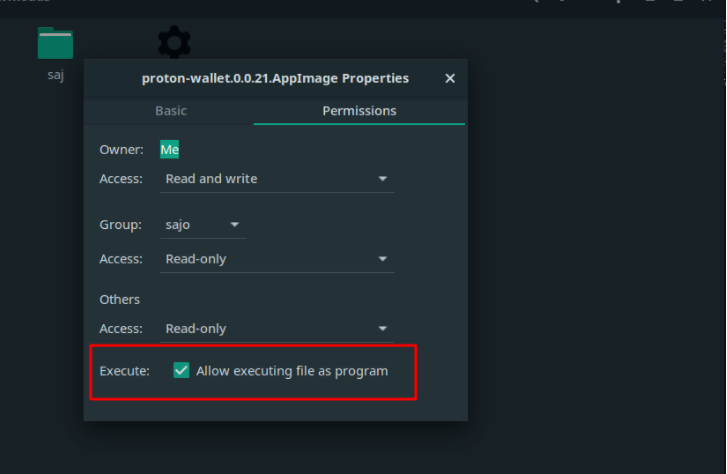
Using the Command Line
- Open a terminal in the directory the appimage file is stored in.
- Input this command:
chmod +x Qbit-wallet*.AppImage(this will allow file to run as a program, which is required)
After completing one of the two above steps, you can launch the wallet simply by double clicking the AppImage file. I recommend moving the AppImage file into a dedicated folder inside your home directory for AppImages. A good location would be /home/your_username/Apps
Using Qbit-wallet
Upon opening Qbit-wallet for the first time, you will see this splash screen:

You have the following options, and clicking each button will take you to the corresponding utility in the wallet. Click on the link to jump to right section of this guide depending on what you'd like to do.
Once you've created a wallet through one of these options, it will automatically open in the future, so you can always open your wallet up with one click when you need to send money.
Creating a Wallet
- Click on
Filein the top left and thenNew(or pressCtrl + Non your keyboard) - You'll see the below message just click next give your wallet a password confim it and click next you will see a 25 word nemonic seed when it is successfully created this seed and view keys are your money let no one see them, Choose a directory and a name to save the wallet (no need for an extension, but you can use one if you'd like) save the wallet and close then log back in again.
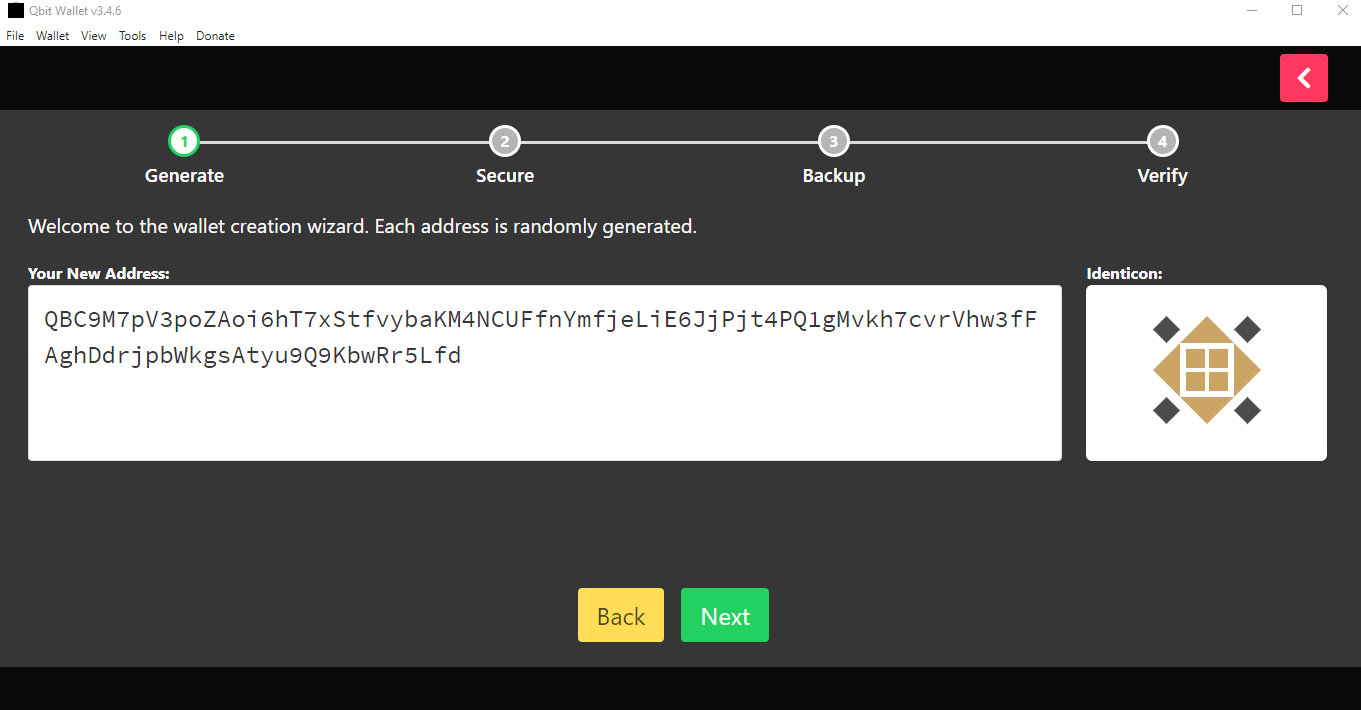
Once your wallet is created, you can navigate to Wallet > Password in the top menu to set a password if desired. You're now all set to start receiving and sending funds with and Qbit-wallet!
Opening a Wallet
- Click on
Filein the top left and thenOpen(Or pressCtrl + Oon your keyboard) - Navigate to the directory where your wallet is saved and double click on the file to open it.
Your wallet is now open and you're ready to start using it! Please note that Qbit-wallet utilizes the new and improved wallet file format and is not compatible with other GUI wallet files. If you have a previous wallet file, follow the next section of the guide to import your keys or seed into Qbit-wallet.
Restoring a Wallet from Seed or Keys
- Click on
Filein the top left. - Click
Restore.
You'll be presented with a dialog box asking if you'd like to restore from private keys or seed. Depending on what option you take, follow the appropriate guide below:
Private Spend and View Keys
- Enter your private spend key
- Enter your private view key
- (Optional) Enter the block height your wallet was created on to start scanning for transactions. This can greatly speed up the process depending on how recent your wallet is.
If you don't know what height to start scanning from, that's OK, just leave this field blank and it will scan from 0.

- Click
Import. - Choose a directory and a name to save the wallet.
- If the wallet was restored succesfully, you will be given a confirmation message:
- Enter your mnemonic seed
- (Optional) Enter the block height your wallet was created on to start scanning for transactions. This can greatly speed up the process depending on how recent your wallet is.
- Click
Import. - Choose a directory and a name to save the wallet
- If the wallet was restored succesfully, you will be given a confirmation message:
- Click on Receive in the top left
- Your Qbit wallet address and a QR code will be displayed. Click on the
Copy to Clipboardbutton to copy your address directly. - Click on the
Sendtab - Type/paste the address you want to send the QBC to
- Type the amount of QBC you want to send (like
100). Note that the total amount with fees will be displayed for you automatically on the right side, including a network fee of 1.00 Q equates to $0.02 cents for sending Q70000.00 and a node fee if any... - Enter the payment ID if the recipient has provided one, or if you require one for your own purposes. Check the payment ID section if you're not sure how/when to use it.
- Click on
Send - Confirm details and click
OKif you're alright with the transaction. Otherwise, clickCancelor pressescon your keyboard. - If the transaction is successful, you will be given a confirmation message:
- Press the X button at the top right corner
- Click on
Filein the top left, then selectClose - Press
Ctrl + Won your keyboard

After this, your wallet will automatically open. Add a password if desired by navigating to Wallet > Password in the top menu. You've now finished importing your wallet into Qbit-wallet and are ready to start using it!
25 Word Mnemonic Seed
If you don't know what height to start scanning from, that's OK, just leave this field blank and it will scan from 0.
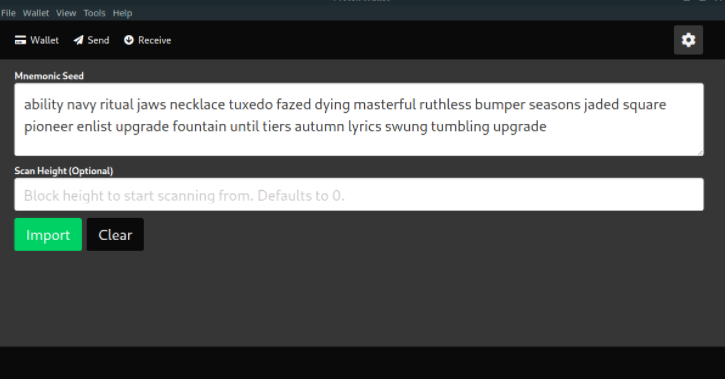

After this, your wallet will automatically open. Add a password if desired by navigating to Wallet > Password in the top menu. You've now finished importing your wallet into Qbit-wallet and are ready to start using it!
IMPORTANT: Make Sure Your Funds are Safe
Each wallet is essentially just a pair of keys (the view key and spend key) from which the public address is derived. It is very important to export these keys and back them up somewhere that is safe and secure (meaning somewhere reliable/permanent that no one else can access).
In the event of a lost or corrupted wallet file, computer crash, etc., the view key, spend key, or mnemonic seed are the only way to restore a wallet and recover the funds it holds.
DO NOT SHARE IT WITH ANYONE. Anyone who has these can access your funds and has complete control over your wallet.
Click on Wallet in the top left, and then Backup. A screen will appear with your address, private spend and view keys, and your mnemonic seed.
Copy the text and store it safely and securely. One good way is to print them out on paper and keep them somewhere safe.

Viewing Wallet Address
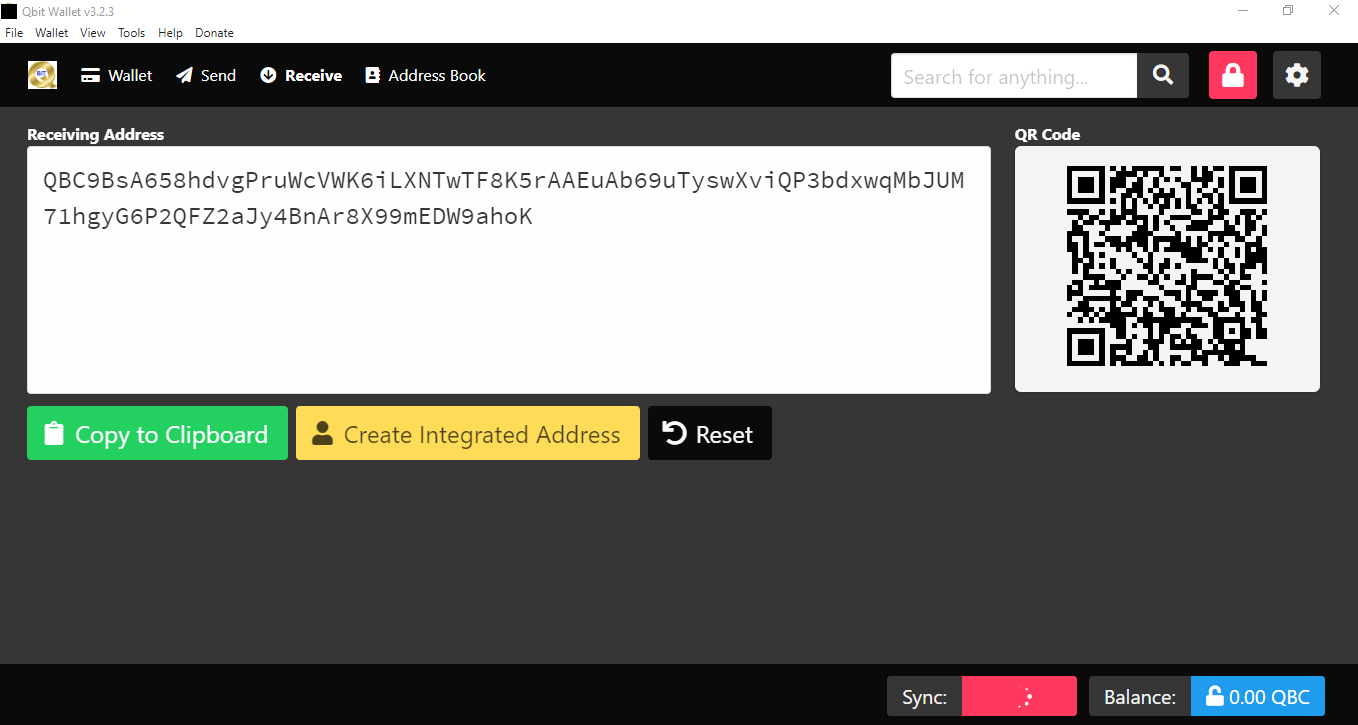
Viewing Wallet Balance
You can see your wallet balance at the bottom of the screen in the main Wallet screen. You can also see a historical balance, similar to how a checkbook or bank account functions, on the right-most column of the transaction table.
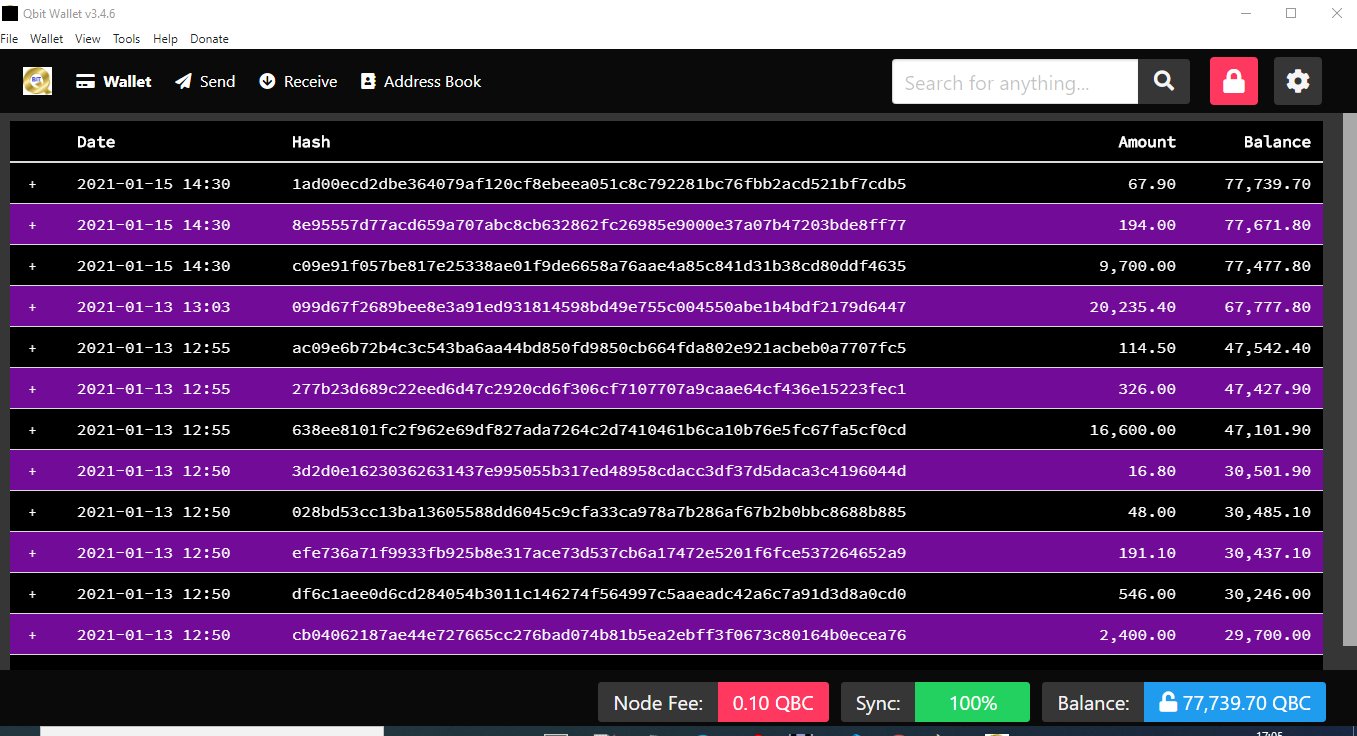
Sending Transactions
To send Q Currency :

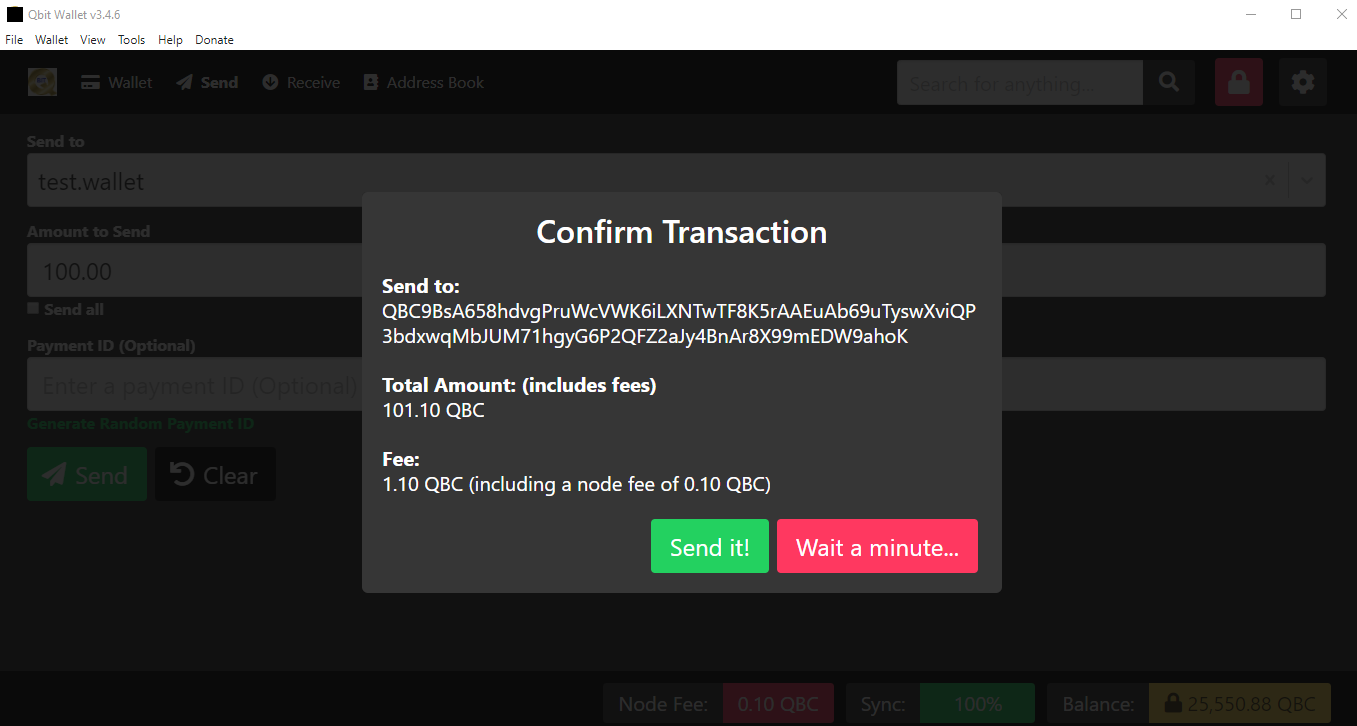
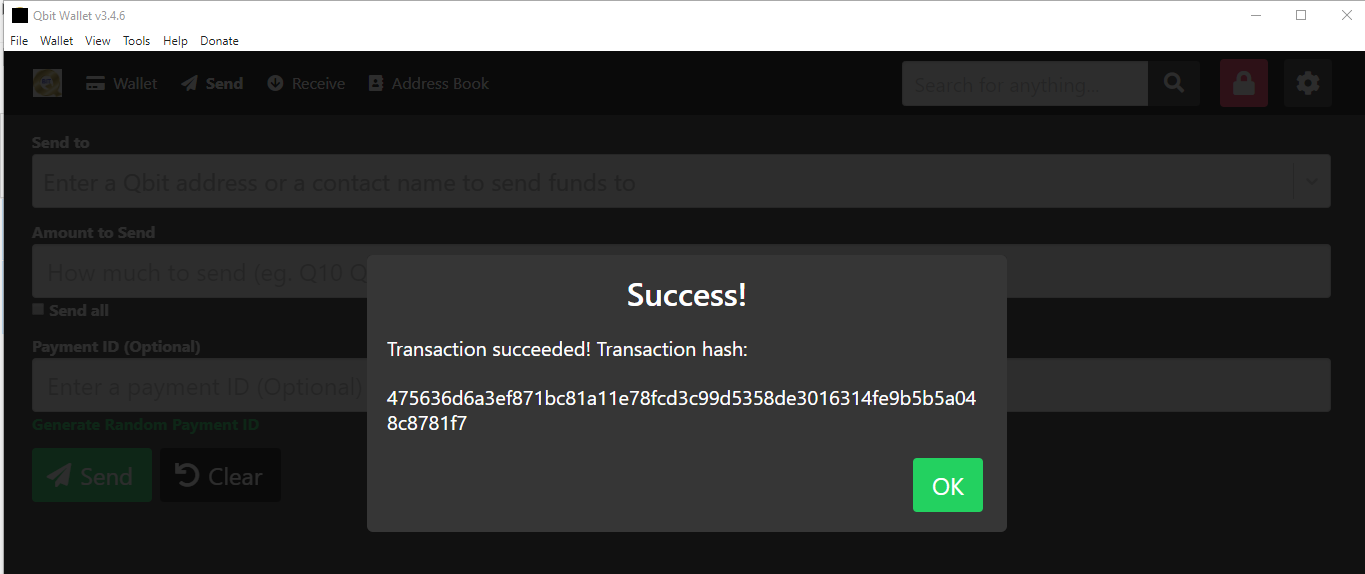
Payment IDs and How to Use Them
Because transactions on the blockchain are privatized, in some situations a payment ID is necessary for the recipient to be able to determine where the payment came from, for instance when depositing to an exchange or other service.
If you're depositing to an exchange, be sure to include a payment ID if requested otherwise your funds may be lost!
To send a transaction with a payment ID, simply enter it in the send screen.
Note that typically, the service/recipient will generate and provide the required payment ID. In this case Do Not generate your own using the Generate Random Payment ID link below the field.
Exiting the Wallet
You can safely exit your wallet using any of these methods: